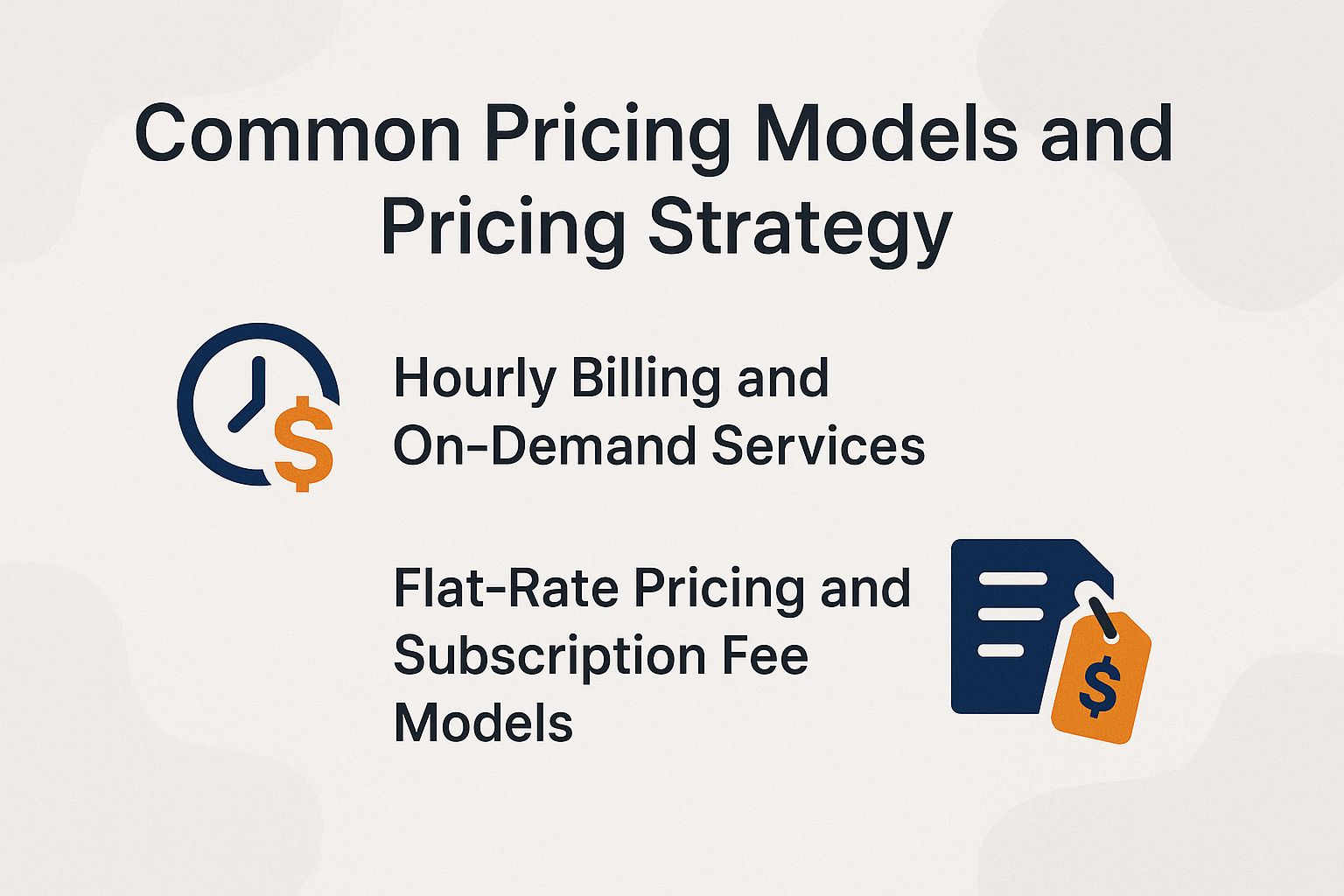Managing IT infrastructure is a complex task for businesses of all sizes. In today’s fast-paced digital landscape, understanding how IT services are priced—and the value they deliver—is crucial. For local companies, working with the right Managed IT Providers in Asheville can have a major impact on operational efficiency, budgeting, and long-term success.
In this article, we’ll explore the most common pricing models offered by Managed IT Providers in Asheville—including hourly billing, flat-rate pricing, and subscription plans. We’ll also look at the key factors that influence costs, the advantages of each model, and how to choose the best fit for your business needs.
Common Managed IT Pricing Models

1. Hourly Billing / On-Demand Services
Hourly billing is a pay-as-you-go model where businesses are charged based on the number of hours worked. Rates generally range from $75 to $150 per hour, depending on the provider’s experience and the complexity of the task.
This model is ideal for:
- Short-term or one-time projects
- Emergency troubleshooting
- Businesses with minimal or infrequent IT needs
Example: A company facing a sudden server issue might only need a few hours of technical support. In this case, hourly billing can be more cost-effective than entering a long-term contract.
However, businesses must clearly communicate time estimates with providers to avoid unexpected charges, especially for tasks that can grow in scope over time.
2. Flat-Rate Pricing and Subscription Plans
Flat-rate pricing offers predictable monthly costs, typically ranging from $500 to $5,000, depending on the size of the organization and the level of service required. This model usually includes a bundle of services such as:
- Helpdesk support
- Network monitoring
- Data backups
- Cybersecurity
- Regular system maintenance
Subscription-based plans are especially beneficial for companies that want consistent support without surprise expenses.
Example: A digital marketing agency might pay a monthly fee of $1,200 for IT support that includes workstation monitoring, email management, and data backups. In contrast, a more tech-dependent firm may pay $3,000 for advanced cybersecurity and 24/7 support.
Flat-rate pricing simplifies budgeting and promotes long-term partnerships between businesses and IT providers. It’s also easier to scale as the business grows, with upgraded service tiers available.
What Influences IT Service Pricing?
Several factors determine how much a business will pay for managed IT services:
1. Scope of Services
The broader the services offered, the higher the cost. A provider offering cloud integration, compliance support, and disaster recovery planning will charge more than one providing basic helpdesk services.
2. Contract Length
Longer-term contracts typically come with discounted pricing. A three-year agreement may cost less annually than renewing a one-year contract each year.
3. Complexity of IT Infrastructure
Businesses with complex or outdated infrastructure may require more hours of service and advanced support, increasing the overall cost.
4. Level of Customer Support
24/7 support or a dedicated technician usually comes at a premium. Businesses needing round-the-clock assistance must be prepared for higher monthly rates.
5. Scalability and Growth Plans
If your business plans to grow, you’ll want a pricing structure that can scale with you. Starting with a smaller package and upgrading as your needs expand is a common approach.
Benefits of Each Pricing Model
Flat-Rate Pricing: Predictability and Simplicity
- Easy to budget for recurring expenses
- Encourages proactive IT management
- Builds long-term relationships between clients and providers
- Ideal for businesses with consistent IT needs and limited in-house expertise
Hourly Billing: Flexibility and Control
- Only pay for what you use
- Great for small businesses or one-time projects
- Better suited for organizations with internal IT staff that occasionally need external support
Each model offers distinct advantages. The key is to align the pricing model with your business’s operational strategy and technology roadmap.
Service Level Agreements (SLAs) and Their Role
Regardless of the pricing model, a Service Level Agreement (SLA) is essential. This document outlines:
- Services included in the plan
- Response times and availability
- Performance metrics
- Penalties for failing to meet expectations
A strong SLA provides transparency and accountability, ensuring your IT provider delivers as promised.
Choosing the Right Model for Your Business
Selecting the best pricing model starts with a thorough understanding of your company’s needs. Consider the following:
Step 1: Define Your Budget
Establish how much you can reasonably invest in IT services. This will help narrow your choices between hourly and flat-rate models.
Step 2: Identify Service Needs
Do you need daily helpdesk support, or only occasional assistance? Do you use cloud services? Are you concerned about cybersecurity? These questions will guide your decision.
Step 3: Evaluate Long-Term Goals
If your business is planning to scale, make sure your IT pricing model can grow with you. Subscription plans are often more adaptable over time than hourly billing.
Step 4: Estimate ROI
Look beyond costs and consider the value added. Efficient IT support can improve productivity, reduce downtime, and even enhance customer satisfaction. Compare expected benefits to projected costs to gauge ROI.
Final Thoughts
Asheville businesses have a wide range of managed IT providers to choose from, each with its own pricing strategy. Whether you opt for the flexibility of hourly billing or the predictability of a flat-rate subscription, the key is to align your IT services with your operational needs and financial goals.
By understanding the factors that influence pricing—and weighing the benefits of each model—you’ll be better equipped to make informed decisions and maximize your investment in technology.
If you’re unsure where to begin, consider consulting a local IT expert or refer to our guide on how to choose the right IT service provider in Asheville, NC.
Discover how Managed IT Providers in Asheville price their services. Compare models & choose the best fit for your business needs today!

